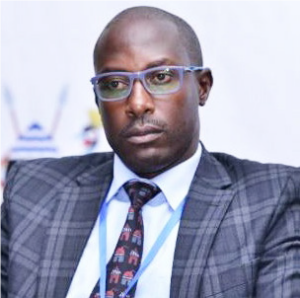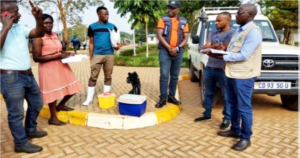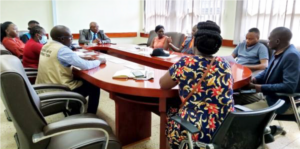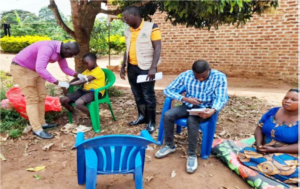 |
Dr. Adams KamukamaMBChB (MUK), MPH (MUK), & Advanced Field Epidemiology Fellow Host Site: National Malaria Control Program (NMCP)
|
|||||
ABOUT THE FELLOWDr. Adams Kamukama is a seasoned epidemiologist with a medical background and a Master of Public Health degree. He is passionate about global health security, public health emergencies, and emergency medical services. During his 2-year fellowship in Advanced Field Epidemiology, Dr. Kamukama was based at the Public Health Emergency Operations Center (PHEOC), Uganda’s central hub for coordinating public health emergency preparedness, response, and recovery. His training at PHEOC equipped him with advanced knowledge and practical skills in emergency coordination and response. He demonstrated strong leadership, proficiency in handling large datasets, and expertise in interpreting data to guide decision-making. Dr. Kamukama also supported the Event-Based Surveillance (EBS) unit through monitoring and triaging community health signals, contributing to early detection and timely responses to public health threats. Achievements at the Host Site
Fellowship program specific achievementsOutbreak Investigations
Surveillance
Publications
Editorial Contributions
Conference Presentations
Summary of Epidemiological Study:Title: Cholera Outbreak Investigation in Kayunga District Background: Cholera is endemic in Uganda began following a funeral of the index case in Kayonjo, an inland village on July 1, 2024. Eleven days later, cases were reported in the distant Lusenke Village. We observed evidence of open defecation, bathing, and washing clothes along the river banks where water for drinking and domestic use was harvested. Using unboiled/untreated river water domestically (AOR=4.5, CI=1.2-17) and drinking it in addition to using it domestically further increased the likelihood of cholera infection (AOR=17, CI=3.8-78). Methods: We defined a suspected case as: onset of acute watery diarrhea during June 24–August 29, 2023 in a resident of Kayunga District aged ≥2 years. A confirmed case was a suspected case with Vibrio cholerae cultured from stool. We described cases, conducted an environmental assessment and performed an un-matched case-control study in Lusenke Village which was the epicenter of the outbreak. We used logistic regression to identify factors associated with cholera infection. Results: We identified 78 case-patients (34 suspected and 44 confirmed); 10 (13%) of whom died. Males were more affected than females (attack rate (AR)=2.4 vs 1.6/1,000). Lusenke Village was most affected (AR=41/1,000). The outbreak Conclusion: This was likely a propagated outbreak triggered by a funeral of a suspected case whose source of infection was unknown and amplified through contamination of river water used and drank by village members. The outbreak ended within one week after a public health ban on drinking and use of River Nile water, community sensitization and providing prophylactic antibiotics. Keywords: Cholera, Outbreak, Kayunga District, River Nile, Uganda Key lessons learnt during the fellowship
|
||||||
|
|
|
|
|
|
|
|





